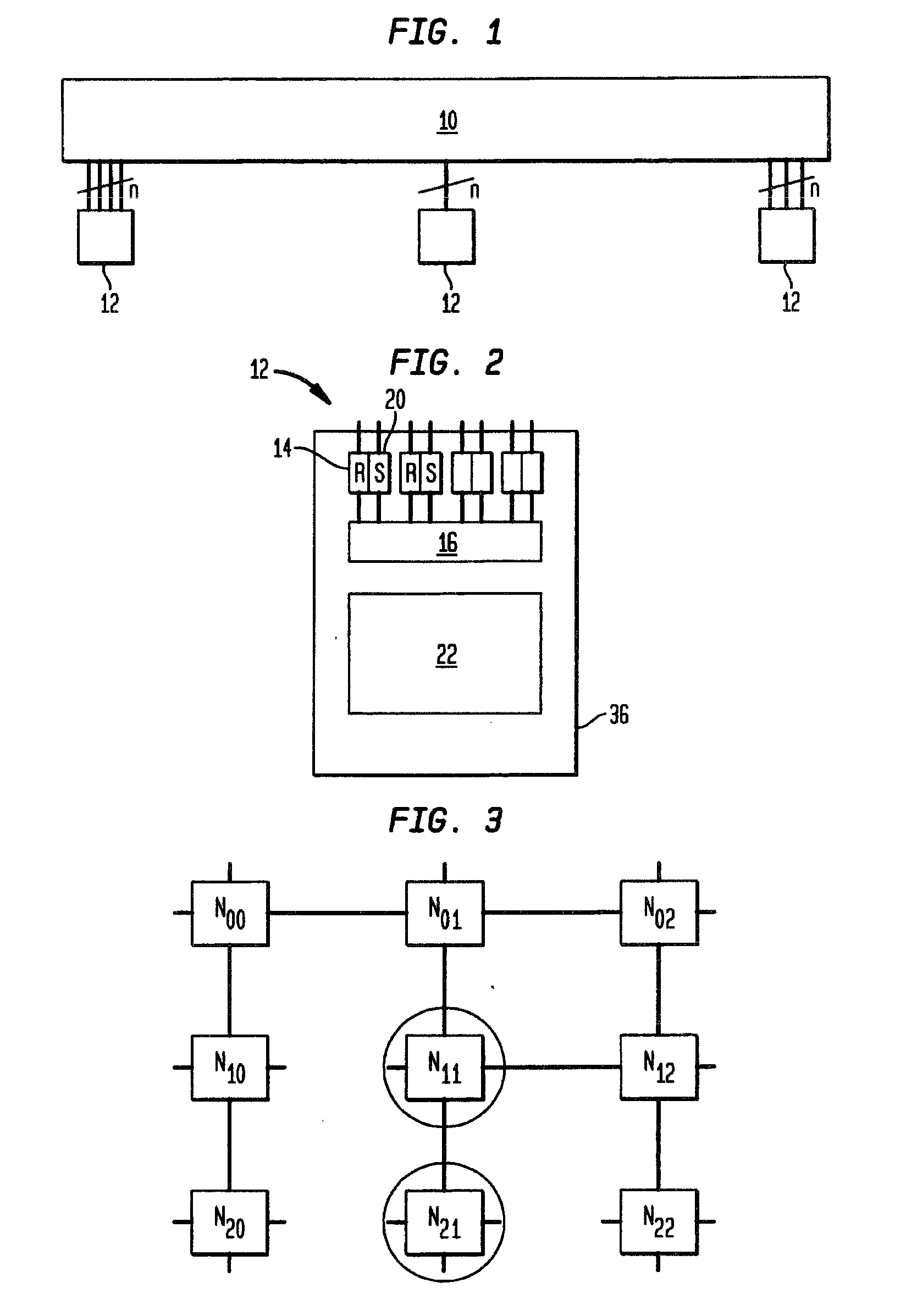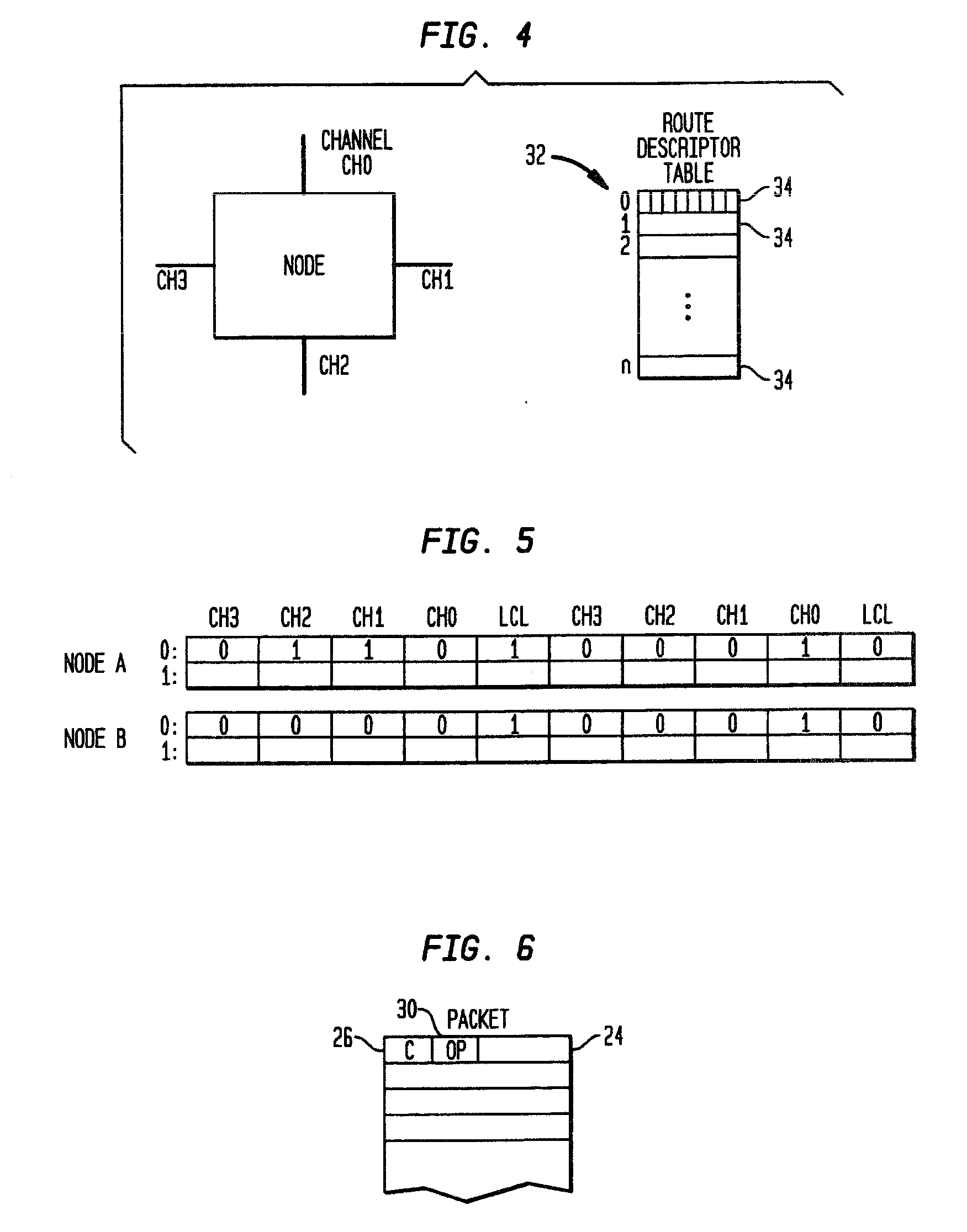Collective network routing
a network routing and collection technology, applied in the field of high-speed digital data processing systems, can solve the problems of limited network scalability to the maximum number of addresses, and inability to use the entire network again, so as to avoid the use of addresses and avoid their associated limitations
- Summary
- Abstract
- Description
- Claims
- Application Information
AI Technical Summary
Benefits of technology
Problems solved by technology
Method used
Image
Examples
Embodiment Construction
[0028]The herein described invention solves the problem to describe packet routes of single packets and to define packet collectives for collective packet operations among a plurality of nodes connected by a network with arbitrary topology of degree n as shown at 10 in FIG. 1. Each node 12 itself comprises the network interface and the local client, which contains the processing elements for data processing of the received data and for injecting results of the local computation into the network.
[0029]The general structure of the network interface with four links, for a network of degree four, is also shown in FIG. 2. Each network link comprises a network receiver 14, which receives packets from the network link and presents the packets to the arbiter 16, which routes the packets, via sender 20, towards the targets specified using the collective class routing method herein described. The network interface also includes a local client CPU and memory, represented at 22.
[0030]In particu...
PUM
 Login to View More
Login to View More Abstract
Description
Claims
Application Information
 Login to View More
Login to View More - R&D
- Intellectual Property
- Life Sciences
- Materials
- Tech Scout
- Unparalleled Data Quality
- Higher Quality Content
- 60% Fewer Hallucinations
Browse by: Latest US Patents, China's latest patents, Technical Efficacy Thesaurus, Application Domain, Technology Topic, Popular Technical Reports.
© 2025 PatSnap. All rights reserved.Legal|Privacy policy|Modern Slavery Act Transparency Statement|Sitemap|About US| Contact US: help@patsnap.com



